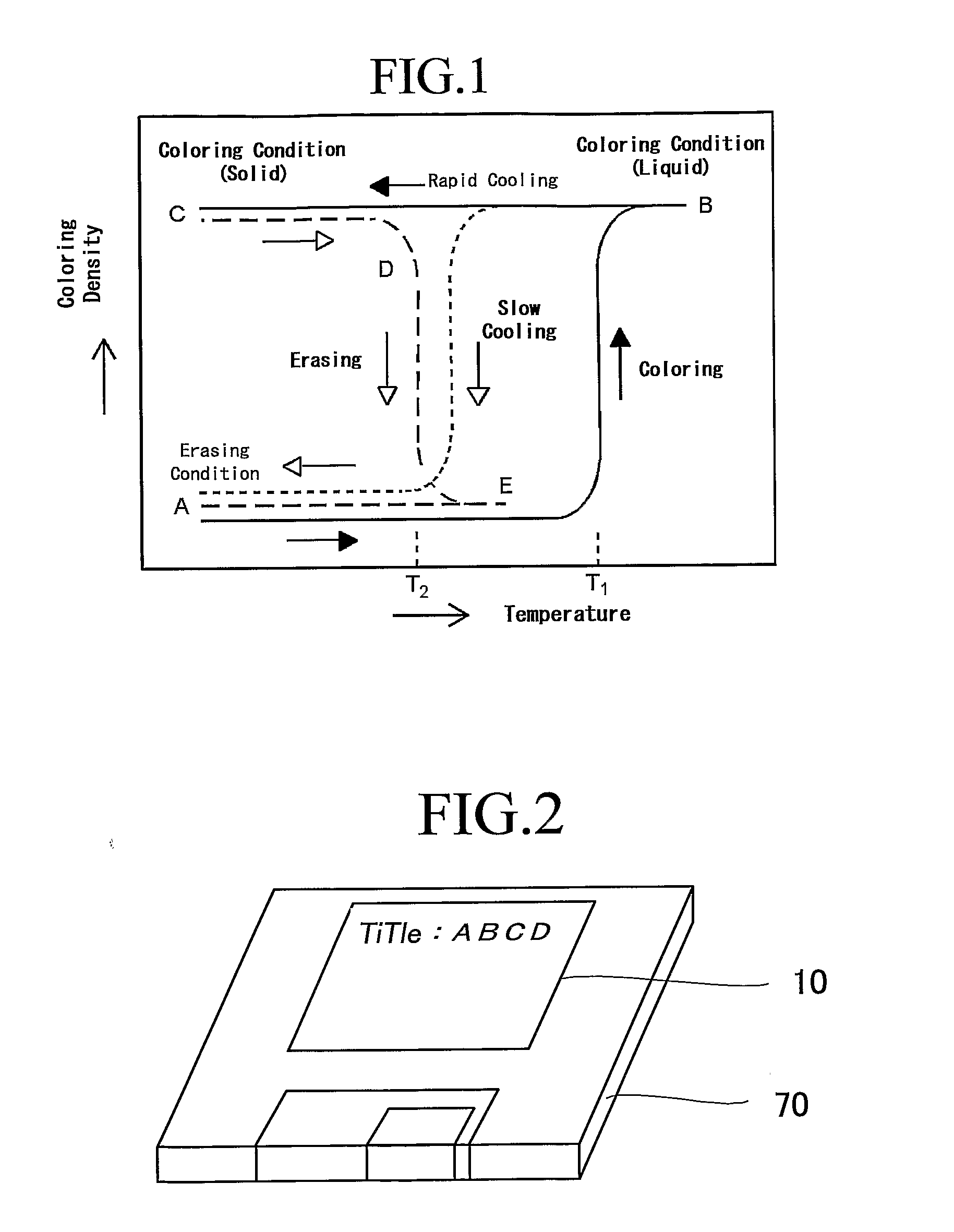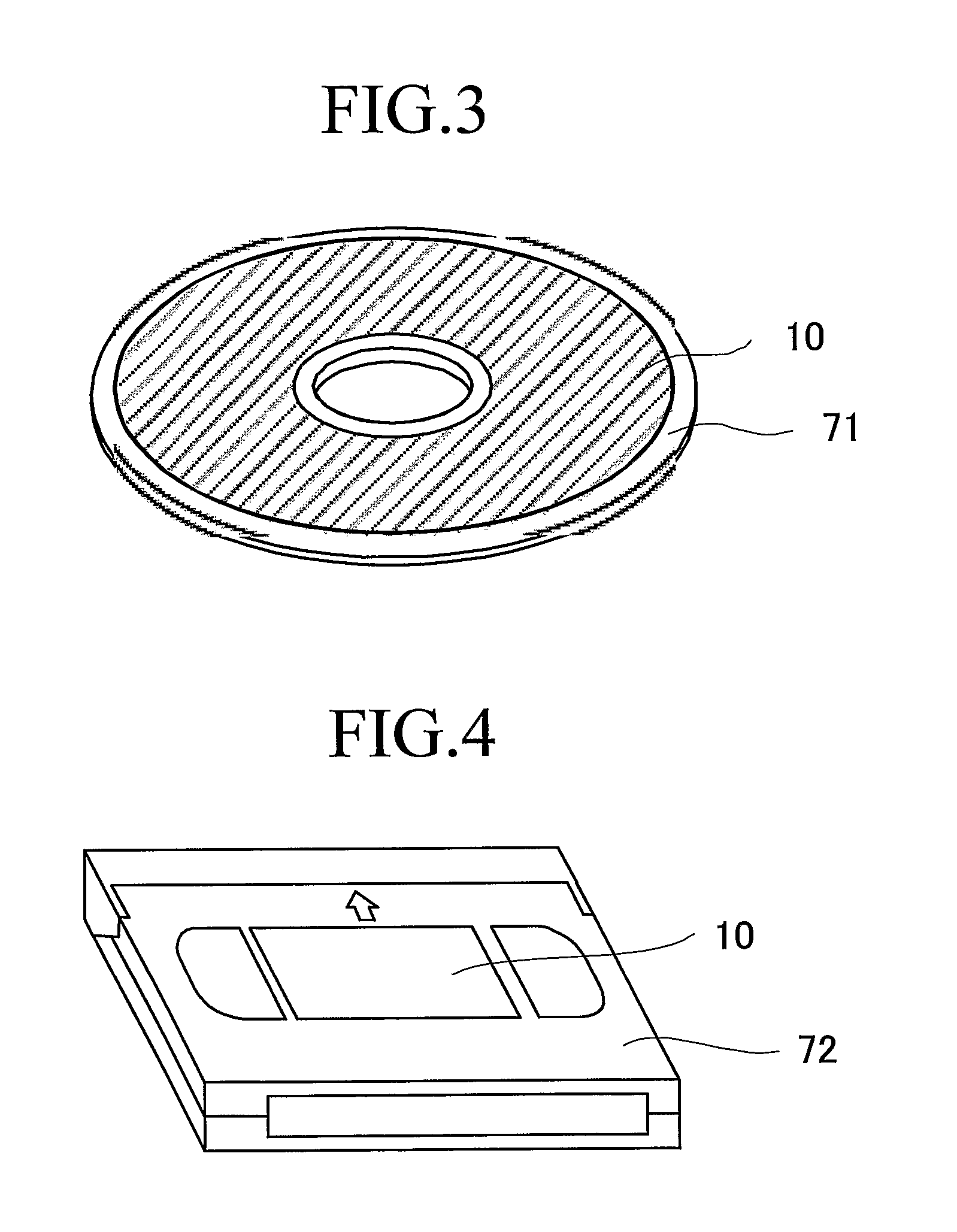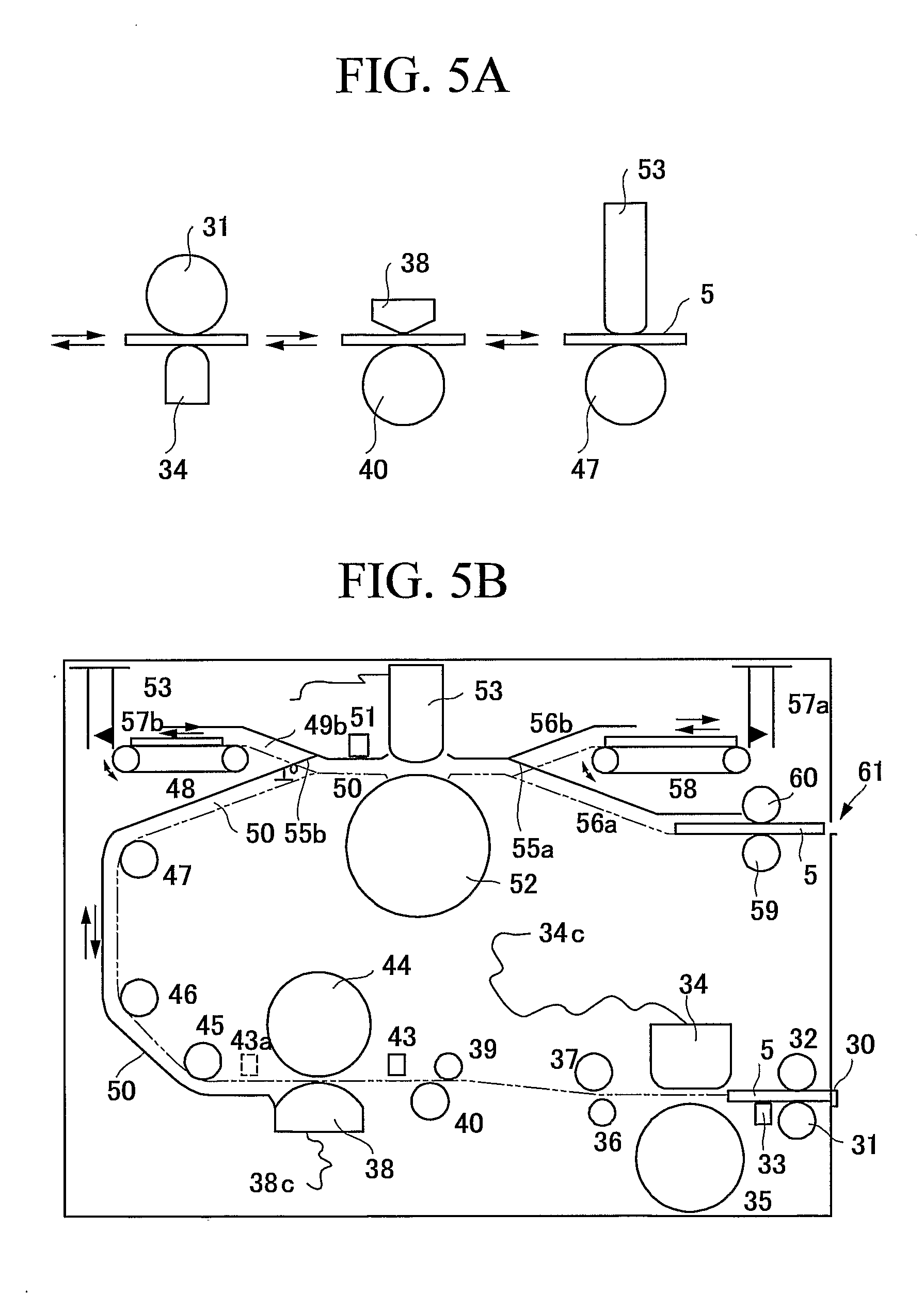Phenol Compound, Reversible Thermosensitive Recording Medium, Reversible Thermosensitive Recording Label, Reversible Thermosensitive Recording Member, Image-Processing Apparatus and Imaging-Processing Method
- Summary
- Abstract
- Description
- Claims
- Application Information
AI Technical Summary
Benefits of technology
Problems solved by technology
Method used
Image
Examples
example 1
[0195] [Preparation of Thermosensitive Recording Layer]
Color developer phenol (I) represented by the following formula 4 partsAcrylpolyol resin (LR503 manufactured by Mitsubishi Rayon Co., Ltd.,Solid content 50% solution, Hydroxyl value: 64 (KOHmg / g)) 9 partsMethyl ethyl ketone70 parts
[0196] The above-mentioned composition was pulverize and dispersed by means of a ball mill to 1 μm of average particle size. To the resulting dispersion, 1.5 parts of 2-anilino-3-methyl-6-dibutylaminofluoran and 2 parts of adduct-type hexamethylened isocyanate 75% solution in ethyl acetate (Colonate HL, manufactured by Nippon Polyurethane Industry Co., Ltd) was added and stirred well to prepare a coating liquid for thermosensitive recording layer.
[0197] Then the coating liquid for thermosensitive recording layer having the above-mentioned composition was coated on a white PET 188 μm thick by means of a wire bar, dried at 100° C. for 2 minutes, followed by heating at 60° C. for 24 hours, thereby a reco...
example 2
[0201] A reversible thermosensitive recording medium was prepared in the same manner with Example 1, except that the following compound was used instead of the color developer (I) which was used in Example 1.
[0202] A reversible thermosensitive recording medium was prepared in the same manner with Example 1, except that the following compound was used instead of the color developer (I) which was used in Example 1.
example 4
[0203] A reversible thermosensitive recording medium was prepared in the same manner with Example 1, except that the following compound was used instead of the color developer (I) which was used in Example 1.
PUM
| Property | Measurement | Unit |
|---|---|---|
| Temperature | aaaaa | aaaaa |
| Temperature | aaaaa | aaaaa |
| Temperature | aaaaa | aaaaa |
Abstract
Description
Claims
Application Information
 Login to View More
Login to View More - R&D
- Intellectual Property
- Life Sciences
- Materials
- Tech Scout
- Unparalleled Data Quality
- Higher Quality Content
- 60% Fewer Hallucinations
Browse by: Latest US Patents, China's latest patents, Technical Efficacy Thesaurus, Application Domain, Technology Topic, Popular Technical Reports.
© 2025 PatSnap. All rights reserved.Legal|Privacy policy|Modern Slavery Act Transparency Statement|Sitemap|About US| Contact US: help@patsnap.com



